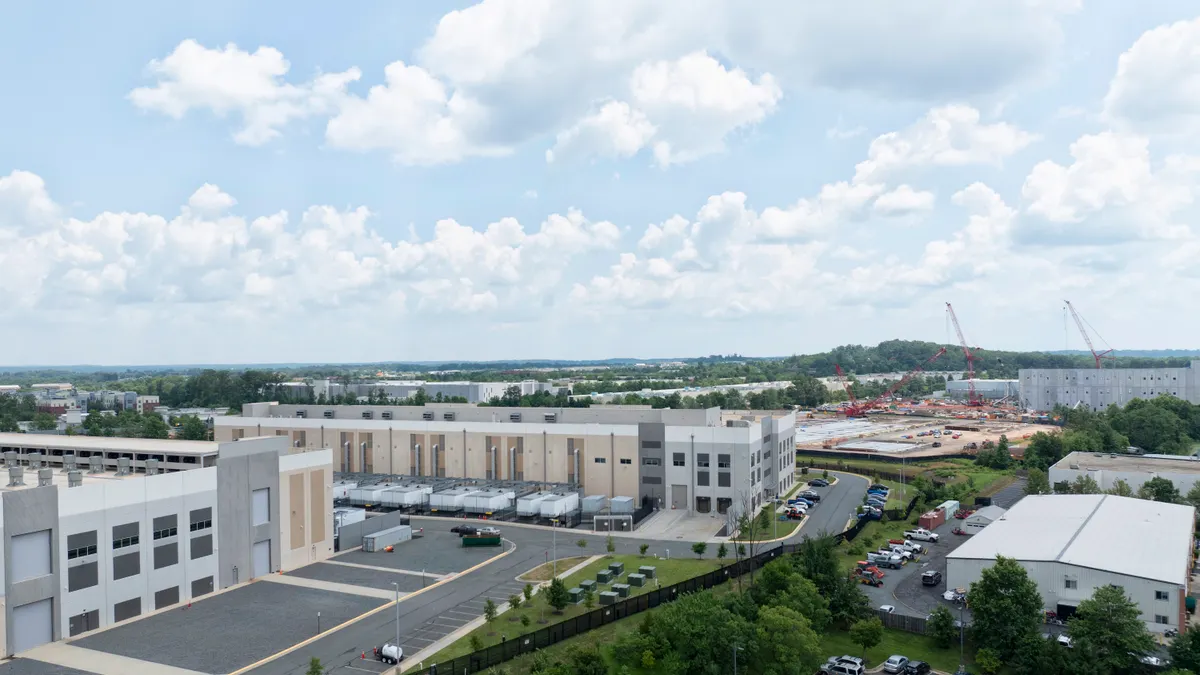Dive Brief:
- Data center availability plummeted in North America during the first half of the year, according to JLL. Colocation vacancy rates dropped to an historic low of 2.3% across the region, dipping below 1% in the largest markets, including Northern Virginia, the commercial real estate investment firm said in a Monday report.
- A spike in demand for cloud and AI services has upended the market, driving up rents by 50% in the last five years even as supply in major regions has doubled or tripled, JLL found. With nearly three-quarters of the current pipeline under prelease agreements, the capacity crunch is expected to persist through 2027, the firm said.
- Enterprises are securing capacity 18 to 24 months in advance, sometimes even earlier, according to Matt Landek, JLL’s U.S. Data Center Work Dynamics division president and data center project development lead. “The days of build-it-and-they-will-come are long gone,” Landek said in a release. “What we’re seeing now is ‘commit-before-it’s-built-or-you-won’t-get-in.’”
Dive Insight:
As CIOs prepare IT estates for AI adoption, cloud providers are laying the groundwork for a compute capacity demand surge that’s already eclipsed supply. Massive waves of hyperscale capital investments flowing into data centers are squeezing out enterprises seeking colocation space.
The scope of the buildouts is immense. Eleven cloud service providers poured roughly $450 billion into data center infrastructure last year, according to Dell’Oro Group. The firm expects data center-related CapEx to continue growing 21% year over year and surpass $1 trillion by 2029.
The spending spree spilled over into the colocation market as big tech supplemented billions of dollars in new construction with leased capacity. Cloud and technology providers dominated colocation demand in North America, accounting for nearly two-thirds of all leasing activity during the first half the year, per JLL.
Hyperscalers are rapidly gobbling up global compute. Last year, cloud providers captured 44% of capacity through owned and leased data centers, while on-premises data centers and non-hyperscale colocation facilities accounted for 34% and for 22% during the first quarter of the year, according to Synergy Research Group analysis. The firm expects hyperscalers to own more than 60% of global capacity by 2030.
“What we’re seeing across primary markets is nothing short of extraordinary,” Curt Holcomb, managing director of JLL’s global data center solutions practice team, said in a release accompanying the report. In Dallas-Fort Worth, the second largest U.S. market behind Northern Virginia, JLL found “unparalleled competition for limited capacity,” with major cloud providers “securing power reservations years in advance,” Holcomb said.
Grid limitations emerged as a major hurdle for providers over the last year. While the colocation construction pipeline during the first half of the year increased roughly tenfold compared with five years ago, average wait times for a power connection in the U.S. rose to four years. Electricity costs have risen nearly 30% in the same period, according to JLL’s research.
“Power has become the new real estate,” said Andrew Batson, head of U.S. data center research at JLL. “With vacancy effectively at 0%, virtually all absorption is the result of preleasing with delivery times extending beyond 12 months.”
Hyperscalers have responded with secondary and tertiary market buildouts, further altering the data center landscape.
While proximity to customers and real estate costs influence placement decisions, rapid growth in AI technologies placed a greater emphasis on power considerations, John Dinsdale, SRG chief analyst, said in a July report. The dynamic favors sparsely populated states, including Oregon, Iowa and Nebraska, he said.
Last week Google Cloud added $9 billion over the next two years to its planned AI infrastructure investments in Oklahoma. The company upped its CapEx plans for the year by $10 billion to $85 billion last month. AWS upped its Georgia data center investments by $11 billion in January.
Colocation providers haven't taken their focus off the leading markets, according to JLL. Half of the deals closed during the first six months of the year were in Northern Virginia and Dallas-Fort Worth. “Emerging markets are capturing only a fraction of colocation demand,” the firm said in the Monday report.














